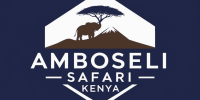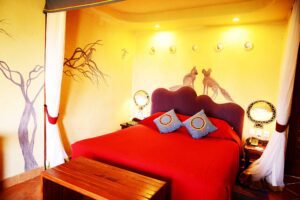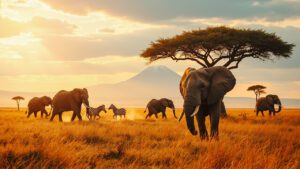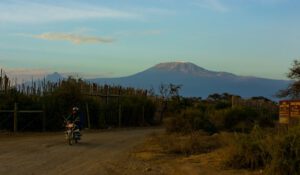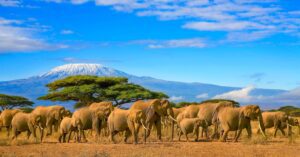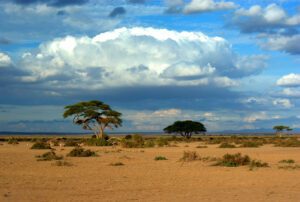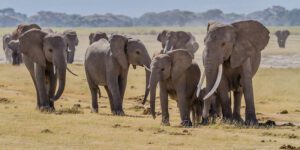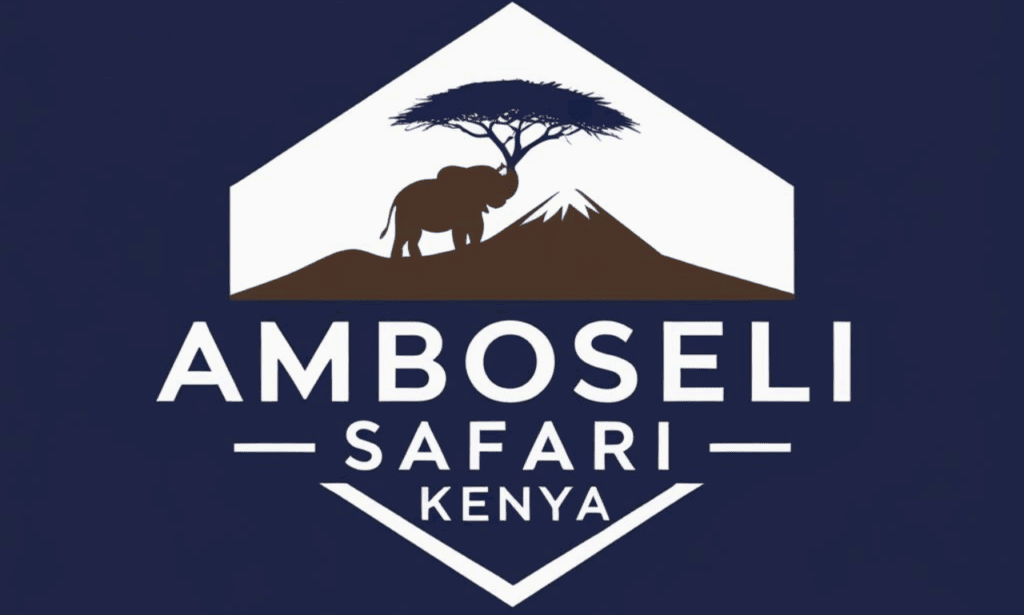What are the transportation options available to travel from Nairobi to Amboseli?
There are several ways to travel from Nairobi, Kenya’s capital, to Amboseli National Park, depending on your preferences and budget. The main options are by road or by air. If you prefer traveling by road, you can either hire a private vehicle, join a guided safari tour that includes transportation, or drive yourself (if you have access to a car). Additionally, some shared shuttles or small buses are available, though they can be less comfortable or convenient compared to other choices.
For air travel, there are domestic flights from Wilson Airport in Nairobi to small airstrips in Amboseli. These flights are quick and save a lot of time, but they come at a higher cost compared to driving. Flying is a great option if you’re on a tight schedule or prefer comfort over cost.
Finally, another unique transportation option is to join a chartered flight or helicopter for a special experience, though this is rare and usually very expensive. The best choice for you will depend on factors like budget, time availability, and your personal preferences for convenience or adventure.
How long does it take to travel from Nairobi to Amboseli?
The time it takes to travel from Nairobi to Amboseli depends on the mode of transportation you choose. If you’re traveling by road, it generally takes around 4 to 5 hours. This time frame assumes that you’re driving directly without long stops, and that the weather and road conditions are good. However, heavy traffic when leaving Nairobi or some rough patches on the road can add extra time. Safari tours sometimes take longer because they may stop at viewpoints, towns, or attractions along the way.
If you’re flying to Amboseli, it’s much faster. A domestic flight from Wilson Airport in Nairobi to Amboseli’s airstrip takes about 30 to 45 minutes. Combined with the time it takes to get to the airport, check in, and board your flight, you can expect the overall journey to take 1.5 to 2 hours.
So, if you’re in a hurry or want the fastest way there, flying is the best choice. But if you have time and want to enjoy the scenery along the way, the road trip is an excellent opportunity to experience Kenya’s beautiful landscapes.
What is the distance between Nairobi and Amboseli?
The distance between Nairobi and Amboseli National Park is approximately 240 kilometers (around 150 miles), though this may vary slightly depending on the specific route you take. There are a couple of main roads that travelers use to get there, and the choice of route depends on your starting point in Nairobi and where in Amboseli you’re heading.
For example, if you go via the Nairobi–Namanga Road and turn off towards the park at a junction near Meshanani Gate, this is considered one of the most common routes. Another option might involve passing through Emali using the Mombasa Road before heading toward Amboseli.
Since Amboseli lies in southern Kenya, near the border with Tanzania, most of the driving or flying journey takes you through scenic views of open plains, small towns, and sometimes even a glimpse of Mount Kilimanjaro in the distance. Knowing how far it is can help you plan for fuel stops, rest breaks, or meals if you’re going by road.
Can I drive myself from Nairobi to Amboseli, and what is the condition of the road?
Yes, you can absolutely drive yourself from Nairobi to Amboseli! This is a popular option for travelers who enjoy road trips, have access to a vehicle, and want the flexibility to explore at their own pace. Driving to Amboseli will also allow you to enjoy the scenic Kenyan landscape and potentially stop at interesting spots along the way.
The journey is mostly straightforward, but road conditions vary depending on the route you take. The two main routes are:
- Via Namanga Border Town: This route passes through Athi River and Kajiado, then continues on to Namanga, a small border town between Kenya and Tanzania. From Namanga, a turnoff leads you to Amboseli. This road is mostly tarmacked and in good condition, but the last stretch (once you leave the main road heading into Amboseli National Park) can be rough, dusty, or even muddy during rains. This makes a 4×4 vehicle ideal. However, for much of this route, a standard car will suffice.
- Via Emali: Another popular route is using the Emali town turnoff from the Nairobi-Mombasa highway, which is also tarmacked for most of the way. Like the first route, the final few kilometers around Amboseli may have rough and untarmacked roads. Again, a 4×4 will be more comfortable and reliable, especially in the rainy season, when muddy patches can make driving tricky.
In terms of safety, this is a safe route for self-driving, as Amboseli is a common tourist destination. However, you should take precautions such as ensuring your vehicle is in good condition, carrying a spare tire, and filling up on fuel before leaving major towns like Nairobi, Kajiado, or Emali. There are limited fuel stations near Amboseli. Additionally, take note of speed limits and avoid driving at night due to reduced visibility and possible encounters with wildlife.
Driving yourself also allows you to set your schedule and enjoy the incredible views of Mount Kilimanjaro in the distance as you approach Amboseli. Be prepared to pay park entry fees at the gates of Amboseli National Park.
If you’re an adventurous traveler confident with navigation or have access to GPS/Google Maps, driving yourself is definitely a rewarding way to experience the area.
Are there flights available from Nairobi to Amboseli, and where do they depart from?
Yes, there are flights available from Nairobi to Amboseli National Park for travelers who prefer a faster and more convenient mode of transportation. These flights are operated by local airlines such as Safarilink and AirKenya, which specialize in connecting major tourist attractions within Kenya. Taking a flight is ideal if you want to save time or if you’re not keen on long road trips.
Flights to Amboseli typically depart from Wilson Airport in Nairobi, a small but busy airport that primarily handles domestic and safari flights. It is about 6.5 kilometers (4 miles) from Nairobi’s city center, making it easily accessible to both locals and tourists. You can get to Wilson Airport by taxi, ride-sharing apps, or private transfers.
The flight itself is short, usually taking about 40 to 50 minutes, and offers stunning aerial views of the Kenyan landscape. On clear days, you might even see Mount Kilimanjaro from the air! Once you land, you’ll arrive at one of the small airstrips in or near Amboseli National Park. Different lodges have different nearby airstrips, so you’ll want to coordinate your plane booking with your safari operator or lodge.
Flying to Amboseli eliminates the challenges of navigating potentially rough roads or dealing with long travel times on land. However, it is generally more expensive than taking a road trip. This makes it an ideal option for visitors with limited time or those who want a more seamless travel experience.
Keep in mind that luggage restrictions on these small safari planes are strict, often limited to 15 kilograms (33 pounds) in soft-sided bags. It’s a good idea to check with the airline in advance to confirm these details.
Overall, flights from Nairobi to Amboseli combine convenience and comfort with amazing scenery, making it a fantastic option if it fits within your travel budget.
What is the cost of traveling from Nairobi to Amboseli by road or air?
The cost of traveling from Nairobi to Amboseli varies widely depending on the mode of transport you choose, by road or by air, and how many people are traveling with you. Here’s a breakdown:
By Road
Driving costs depend on whether you rent a car, use a private tour operator, or take public transport:
- Self-Driving:
- If you rent a car, typical rental prices in Nairobi range between $50 to $150 per day, depending on the type of vehicle. A standard sedan is cheaper, but a 4×4 (like a Toyota Land Cruiser) is recommended for Amboseli, especially during the rainy season. 4×4 rentals usually cost around $100-$150 per day, plus fuel.
- Fuel for the round trip (approximately 460 kilometers or 285 miles) may cost around $50-$80, depending on fuel prices and your vehicle’s efficiency.
- Private Tour Operator or Safari Package: Booking through a tour operator typically costs more since they include extras like a guide and park entry fees. Prices for road safaris to Amboseli range between $300-$600 per person for a 2- or 3-day trip, depending on the level of luxury and accommodations.
- Public Transport: Public buses and matatus (shared minibuses) are the cheapest but least convenient and comfortable option. You can expect to pay $12-$20 per person one way, depending on the route and where you board.
By Air
Flying is faster but significantly more expensive. A one-way ticket on a local airline like Safarilink or AirKenya from Wilson Airport to Amboseli costs around $150 to $300 per person. Round-trip tickets often go for $300 to $500, depending on the season and how early you book.
Air travel also involves related costs like transport to and from Wilson Airport in Nairobi and possibly a transfer from the Amboseli airstrip to your lodge or camp in the park. These transfer fees vary, with some lodges including them in their rates, while others charge separately (around $50-$100 per person).
Park Fees
Regardless of whether you drive or fly, you’ll need to pay entrance fees for Amboseli National Park. These fees are $60 per adult per day and $30 per child for non-residents. Residents and citizens of Kenya pay discounted rates if they have valid documentation.
In summary:
- By road (self-driving): $150-$300 total, including car rental, fuel, and park fees.
- By road (tour operator): $300-$600 per person.
- By air: $500+ per person, including return flights and park fees.
Your choice depends on your budget, time constraints, and preferred travel style!
Are there buses or shared shuttles available from Nairobi to Amboseli?
Yes, there are buses and shared shuttles available to travel from Nairobi to Amboseli, but these options are somewhat limited compared to other major routes in Kenya due to Amboseli’s remote location and its popularity mainly as a safari destination. Most people traveling to Amboseli opt for private vehicles, tours, or flights, but if you’re looking for public transport, here’s how it works:
Shared shuttles and buses typically travel to towns and centers near Amboseli, such as Emali, Loitoktok, or Kimana, which are closer to the national park. For example, you can catch a matatu (Kenya’s version of shared vans/mini-buses) or a bus headed to towns along the Mombasa Road, preferably to Emali. Once you get to Emali (around 150 km from Nairobi), you’ll need to find a separate matatu or arrange local transport to Amboseli, which is another 100 km or so from Emali.
Another option is to head to Loitoktok, a larger center near Amboseli, or Kimana, a smaller town close to some park gates. These towns are not directly connected by major bus companies but are reachable with smaller matatus or hired taxis. Keep in mind that such transportation may not always be reliable or comfortable, as matatus are frequently overcrowded and may run on flexible schedules based on demand.
It’s also important to understand that public transport like buses and shared shuttles typically drops you off in nearby towns and not directly at Amboseli National Park. To complete your journey to the park’s gates or lodges, you might need to hire a boda boda (motorbike taxi) or a local driver.
If you’d like a more comfortable and straightforward ride and don’t mind paying more, many organized safari companies offer shuttle services that can take you directly from Nairobi to Amboseli. These are usually part of tour packages where the cost covers both the transport and the safari experience itself.
In summary, buses and shared shuttles do exist as a budget-friendly option for reaching the areas near Amboseli, but they require multiple connections and patience. It’s best to plan ahead if you’re relying on public transit or consider backup options if buses are unavailable when you arrive.
What are the best times of the year to travel to Amboseli from Nairobi?
The best times to visit Amboseli National Park are during the dry seasons, which generally occur between June to October and January to February. These months provide the ideal conditions for wildlife viewing and experiencing the park at its finest.
During the dry season, the vegetation is sparse, making it much easier to spot animals like elephants, lions, zebras, and giraffes as they gather around water sources, which are more visible. Additionally, the weather is typically clear and sunny, offering stunning views of Mount Kilimanjaro, located just across the border in Tanzania. If you’re hoping for the picture-perfect scenic backdrop of elephants against the majestic Mount Kilimanjaro, this is your best bet.
On the other hand, the wet season, from March to May (the long rains) and November to December (the short rains), is considered the low season for Amboseli tourism. While the rains can make it harder to navigate roads and track animals (especially if you’re driving yourself), this period has its perks too. For example, the wet season brings lush green landscapes, which are beautiful to see, and it’s also the time when migratory birds flock to the area, making it a treat for birdwatchers. Additionally, there are fewer tourists, so you can enjoy a quieter, less crowded experience, and accommodation rates are often lower.
It’s worth noting that Amboseli’s wildlife is relatively easy to spot year-round compared to parks with dense vegetation, like Masai Mara. However, some areas of the park may become temporarily inaccessible in heavy rains due to flooding, so the dry season has the advantage of fewer logistical challenges.
In summary, the dry season (June–October, January–February) is the best time to visit Amboseli for optimal wildlife viewing and clear scenic views of Mount Kilimanjaro, but the rainy season has its own charms, especially if you’re interested in birdwatching or traveling on a budget.
Are there any scenic routes or stopovers to explore on the way to Amboseli?
Yes, the journey from Nairobi to Amboseli can be as exciting as the destination itself if you take the time to explore some scenic routes and stopovers along the way. Here are a few notable options:
1. Emali Town (Mombasa Road Route)
If you’re taking the main Mombasa Road route to reach Amboseli, you’ll pass through Emali, which is a popular stop for travelers. It’s a small town where you can refuel, grab snacks, or stretch your legs. Though not a tourist destination in itself, Emali is the point where most people turn off the highway to head towards Amboseli National Park.
2. Kimana Town
This charming town is located near the Kimana Gate, one of the main entrances to Amboseli. Kimana is surrounded by Maasai villages, and you can stop by to interact with the local Maasai communities, learn about their culture, and even purchase traditional crafts like beadwork. While exploring these villages, you may also encounter magnificent views of Mount Kilimanjaro if the skies are clear.
3. Chyulu Hills National Park
If you’re open to making a detour, the serene Chyulu Hills National Park is roughly halfway between Nairobi and Amboseli. This volcanic mountain range offers unique landscapes filled with rolling green hills, lava fields, and caves. It’s a great spot for hiking or taking photos if you want a quick adventure before continuing your journey.
4. Sheldrick Elephant Trust’s Reintegration Units
If you’re an animal lover, you can visit the Sheldrick Elephant Orphanage’s field units near Amboseli. These units care for rescued elephants that are in the process of being reintegrated into the wild. These visits often require prior arrangements but are a special treat for wildlife enthusiasts.
5. Scenic Views of Mount Kilimanjaro
As you approach Amboseli, particularly on clear days, the views of Mount Kilimanjaro are absolutely breathtaking. Depending on your route and timing, you’ll have opportunities to capture scenic photos of the mountain, often towering over acacia trees and open savannah.
6. Cultural Experiences with the Maasai
Throughout the route, especially as you near Amboseli, you’ll see many Maasai villages dotting the landscape. Many of these villages welcome visitors to learn about their traditions, including their distinctive dances, songs, and stories.
In summary, your road trip to Amboseli can include cultural, natural, and scenic highlights, especially if you make time for stops like Kimana, Chyulu Hills, or a Maasai cultural experience. These not only break up the journey but also enrich your overall travel experience.
What permits or entrance fees are required to access Amboseli National Park?
To enter Amboseli National Park, you need to pay an entrance fee that is managed by the Kenya Wildlife Service (KWS). These fees vary depending on factors like your residency status, age, and whether you’re staying overnight inside the park.
For non-residents (tourists visiting Kenya), the standard entrance fee is around USD 70 per adult per day and USD 40 per child per day. For East African residents or Kenyan citizens, the fee is significantly lower – for example, Kenyan citizens pay about KSh 860 per adult. Proof of residency (e.g., work permits or local IDs) is required to qualify for these lower rates.
If you’re driving your own vehicle into the park, there’s an additional vehicle fee, which depends on the size of your car. A small car might cost about KSh 300–500, while larger vehicles like tour vans or buses are charged more.
The fees help with maintaining the park’s infrastructure, supporting wildlife conservation efforts, and funding anti-poaching programs. Make sure to carry cash, though most KWS gates can accept credit cards. A tip: it’s wise to confirm the exact fees on the Kenya Wildlife Service website beforehand for the most up-to-date information.
Example: If you’re a non-resident family consisting of two adults and two kids visiting for one day, you’d pay around USD 220 in total (USD 140 for two adults and USD 80 for two kids).
Remember, these fees apply whether you’re visiting on a guided safari, self-driving, or joining a tour group. Some tour packages already include entrance fees, so make sure to confirm what’s included when booking with a tour operator.
How do I organize a guided tour or safari package for Amboseli from Nairobi?
Organizing a guided tour or safari to Amboseli from Nairobi is simple, as there are many experienced tour companies operating in the region. Here’s a step-by-step guide:
- Research Tour Operators: Start by looking into reputable safari operators offering Amboseli packages. Look for reviews on platforms like TripAdvisor or SafariBookings. Well-known companies include Gamewatchers Safaris, Maasai Wanderings, and others.
- Choose a Package: Decide what kind of experience you want. Many packages vary in terms of duration (day trips, 2–3 day safaris), accommodation (luxury lodges, budget camps, midrange options), and group size (private tours or group tours). For example, a luxury 2-day safari including transport, meals, and park fees might cost around USD 300–500 per person, while more budget-friendly camping trips might start at USD 150–200 per person.
- Inclusions and Exclusions: Check what’s included in the package. A good safari tour typically covers round-trip transport from Nairobi, park entrance fees, game drives, accommodation, and meals during your stay. Exclusions might be personal expenses, tips, and optional activities like cultural visits to Maasai villages.
- Contact Operators: Once you’ve narrowed down your options, contact the tour companies to discuss your preferences. Provide details like the number of people in your group, your travel dates, and any special requests (e.g., vegetarian meals or a private vehicle). They’ll develop a customized itinerary if needed.
- Payment and Confirmation: Pay a deposit to confirm your booking. Make sure you receive a detailed itinerary and receipt to avoid surprises later.
- Departure: On the travel day, most tours offer pick-up from your Nairobi hotel or the airport. From there, you’ll travel to Amboseli , usually a 4–5 hour drive , and start your safari.
Example: Let’s say you’re interested in elephants (Amboseli is famous for them due to the large herds and the backdrop of Mt. Kilimanjaro). You can book a 3-day guided safari that includes game drives to spot elephants, lions, cheetahs, and more. Everything from meals to transport is taken care of, so all you need to do is relax and enjoy the wildlife.
What essentials should I pack or prepare for a trip from Nairobi to Amboseli?
Packing for Amboseli can make or break your trip, so it’s important to be prepared. Here’s what you need:
- Clothing: Amboseli is warm most of the year, but mornings and evenings can get chilly. Pack light, breathable clothes for the day (like cotton T-shirts, shorts, and safari pants) and a jacket or sweater for the cooler times. Neutral colors like beige, brown, or green are ideal as they blend in with the environment and don’t attract animals or bugs. Don’t forget a hat and sunglasses for protection from the sun.
- Shoes: Comfortable closed-toe shoes, like hiking boots or sturdy sneakers, are a must. They’ll protect you from thorns and insects, especially if you’re exploring any bushy areas near your lodge.
- Documents: Carry your passport, park entry permit/fee receipt, and any necessary ID. If you’re a resident, bring proof of your residency to get discounted rates.
- Toiletries: Pack travel-sized toiletries, sunscreen (SPF 30 or higher), lip balm, and insect repellent containing DEET to ward off mosquitoes. Amboseli is in a malaria zone, so consult your doctor about prophylactics.
- Camera and Binoculars: For wildlife viewing, binoculars are your best friend. Pair them with a camera (or smartphone with zoom) to capture elephants, lions, and that iconic Kilimanjaro backdrop.
- Snacks and Water: Keep hydrated by bringing a reusable water bottle (hot weather means you’ll need to drink more than usual). While your lodge or tour should provide meals, packing light snacks like granola bars is always a good idea for the road.
- Power Bank and Chargers: Electricity might not always be available, especially in budget camps, so bring a power bank to keep your devices charged.
- Medication: Bring any personal medication you might need, along with a first aid kit containing basics like band-aids, painkillers, and antihistamines.
- Money: Have cash (Kenyan Shillings) for tips or additional expenses like Maasai village visits.
- Other Essentials: Consider a small backpack for day trips and a rain jacket if you’re visiting during the rainy season (March to May or November).
Example: Imagine you’re on a game drive, and the guide spots a lion lazing in the grass. Thanks to your binoculars and camera, you get a closer look and amazing photos. Because you packed sunscreen and a hat, the hot sun doesn’t ruin your day, and your reusable water bottle keeps you refreshed. Packing smartly ensures your trip runs smoothly and comfortably.
